Model 25-26-29
1905 model year.
4-cylinder engine.
Model 25 touring - 40hp, 104 inch wheelbase
Model 26 Victoria - 50hp, 110 inch wheelbase
Model 29 limousine - 50hp, 110 inch wheelbase, also reported as 114 inch
These models are so similar that it can be difficult to visually distinguish them.
Thomas's own advertising used alterations of one model's image to
produce images that were labeled with a different model designation.
Therefore they are all presented together here.
It is possible to distinguish 40hp cars from 50hp -
the 40hp car has a short radiator, and the 50hp has a longer radiator with the crank passing through it.
1905 was the first production year for E. R. Thomas's patented body shape, designed to reduce dust entry into the tonneau.
Along with J. R. Koen, he applied for a design patent on Oct. 13, 1904,
and was granted #37,216 on Nov. 8, 1904.

Note the close-mounted door hinges and the beltline trim on the door.
Car #1
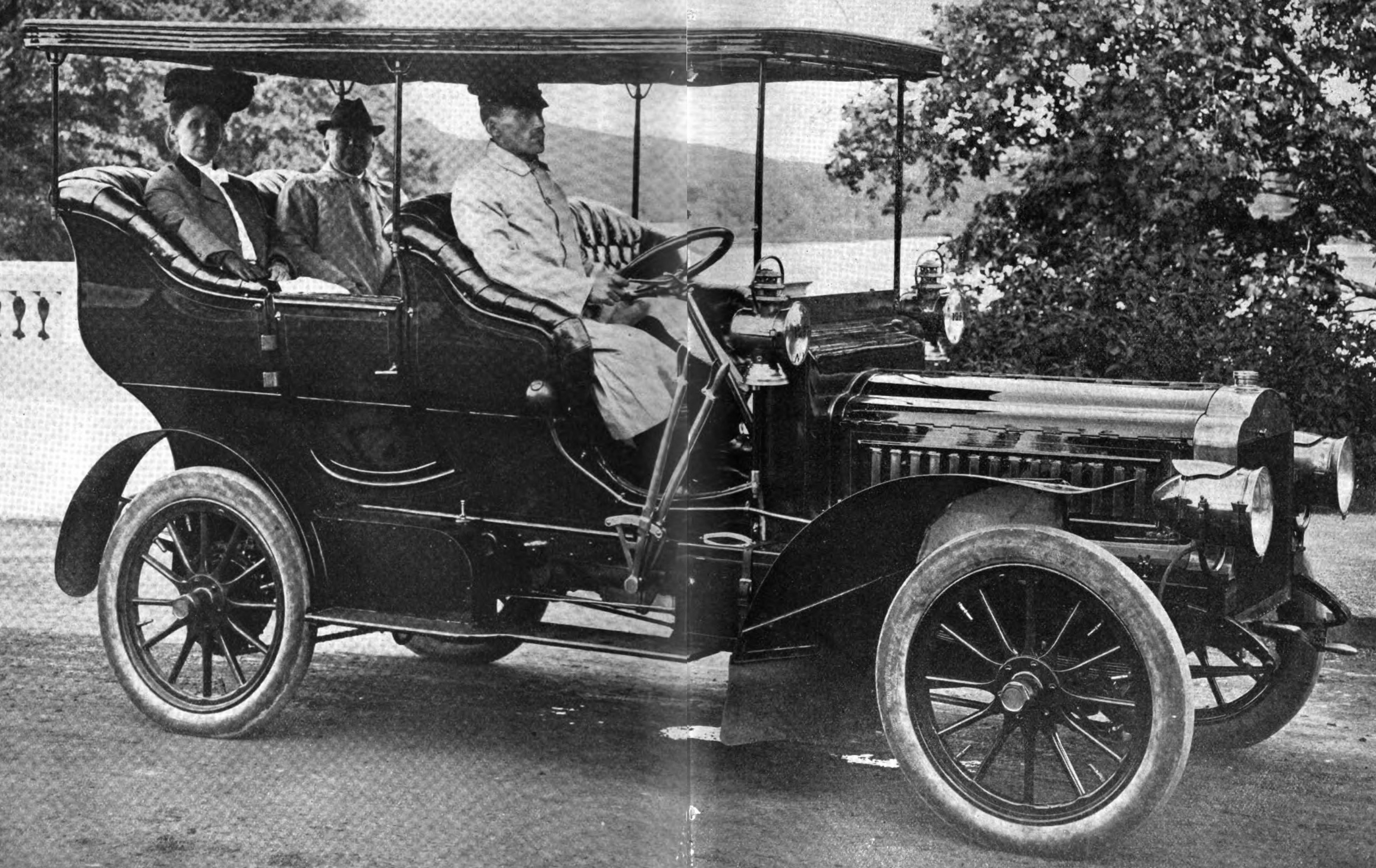
Automobile Review, Oct. 1, 1904
This is the earliest known photo of a 1905 4-cylinder car.
It is probably E. R. Thomas's development vehicle - this photo shows him and Mrs. Thomas in the back seat.
This particular car appears to be the source of many early advertising images. Note:
- rear door beltline trim
- top of rear door not upholstered
- rear door hinges too close together for proper strength
- low horn bulb position
- 45 degree angle of horn tube behind the driver's ankles
- far forward positioin of horn between fender and hood
- pinstriped wooden box behind right front fender
- bullet headlamps
- short radiator with crank below, as in 1904
All of these features appear in the next 8 images, labeled as various models.
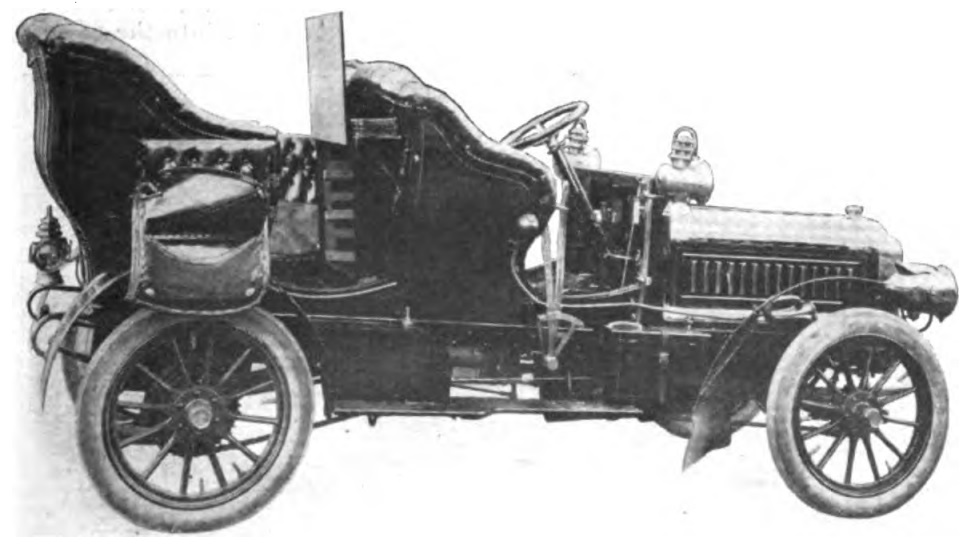
Cycle and Automobile Trade Journal, Oct. 1, 1904
This photo appears, with background, in the 1905 Advance Catalog.

1905 Advance Catalog.
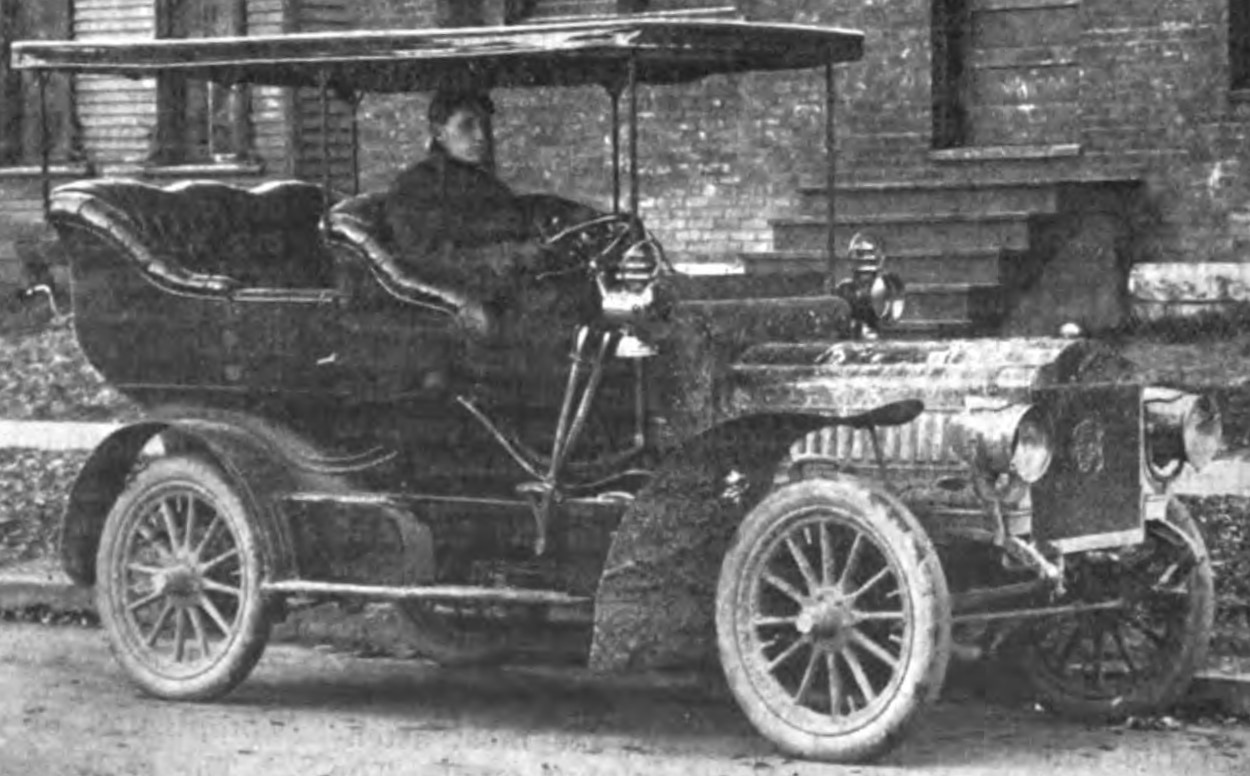
Automobile Review, Nov. 26, 1904
A continuation of photos of E. R.'s original Model 25, as well as the next two photos.
This one was taken during a factory endurance run.
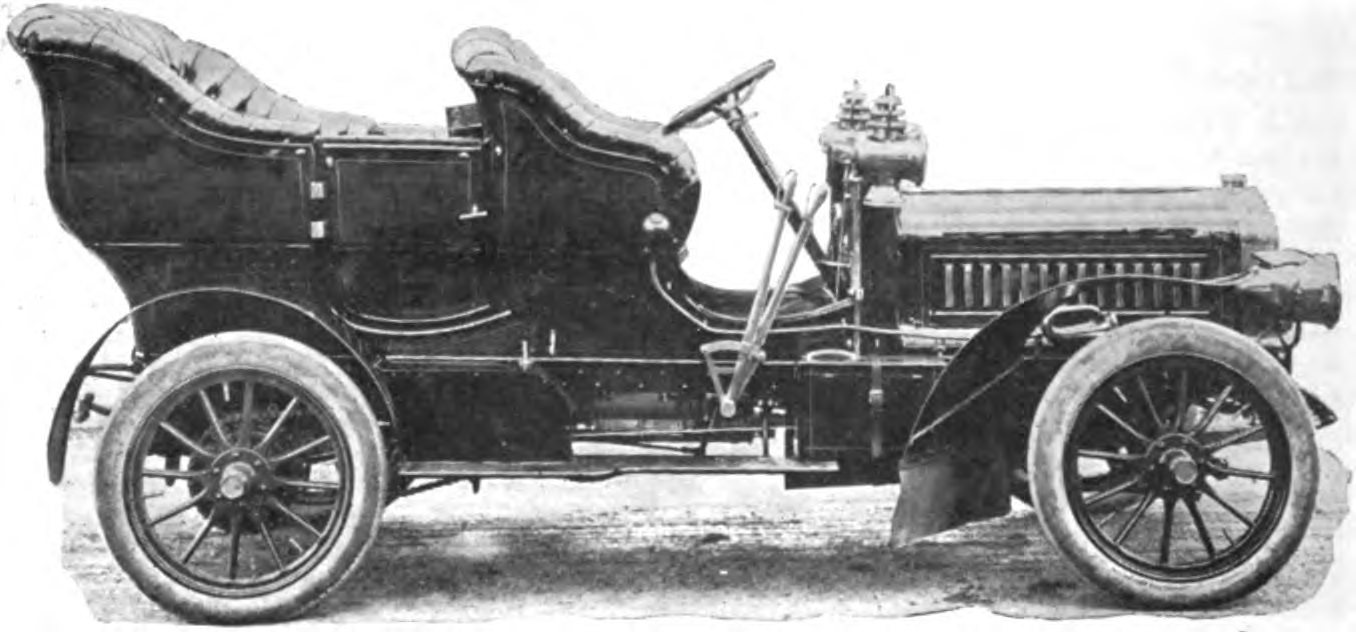
Cycle and Automobile Trade Journal, Dec. 1, 1904
This photo appears in the Buffalo Evening News, Jan 1, 1905, and is labeled 'Thomas 40-Horse "Flyer" '.
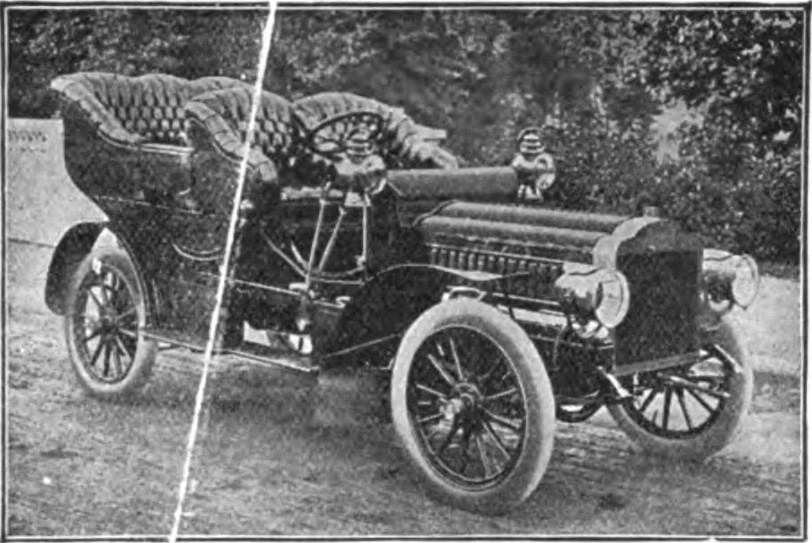
Automobile Review, Dec. 31, 1904
This photo reappears in the 1905 Advance Catalog, is the source for the image in the 1905 catalog.
Note the short radiator, with the crank stem passing below the bottom tank.
The first patent drawing, at top, may have been produced from this photo.
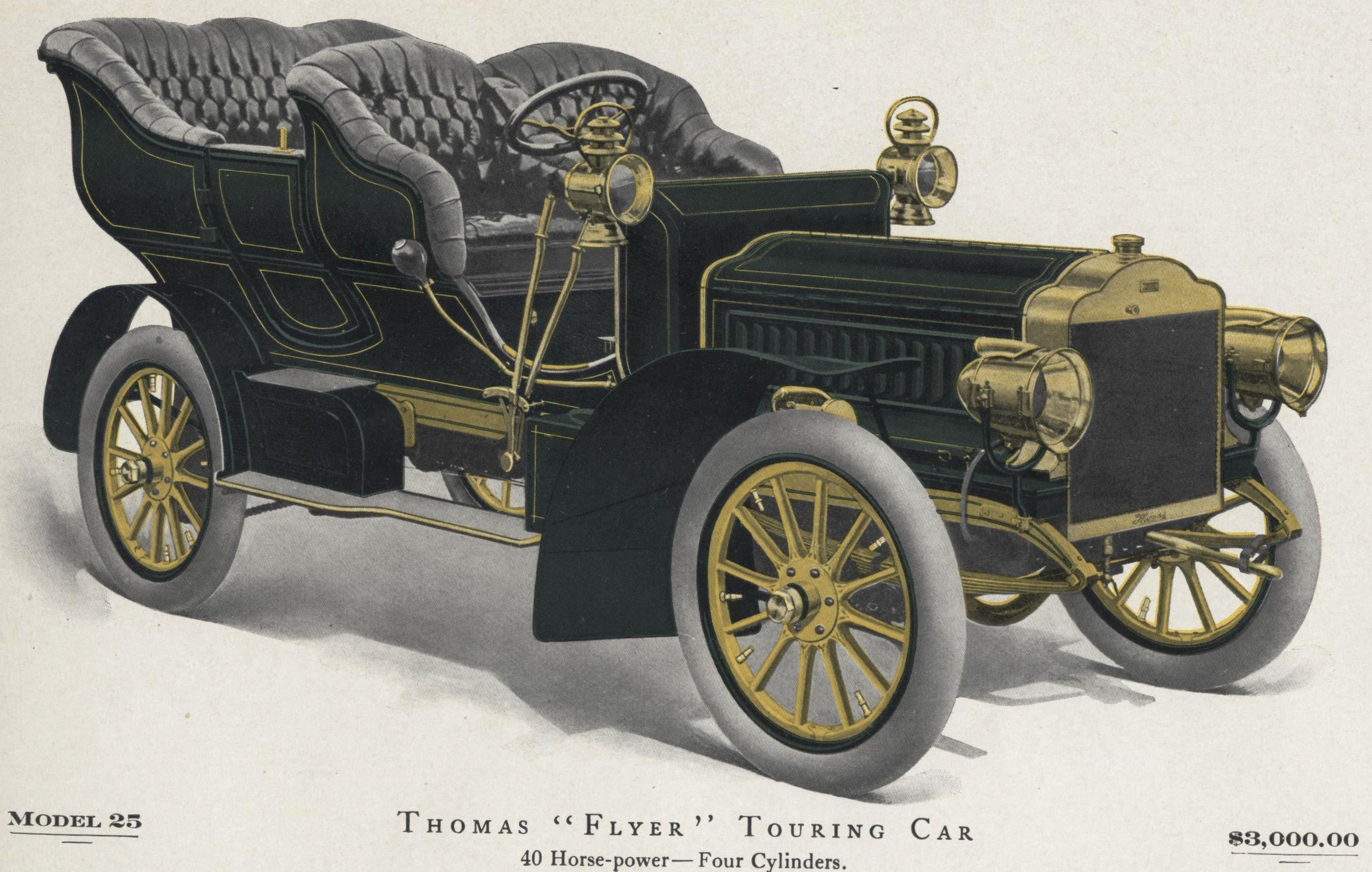
1905 catalog
Note positions of wheel spokes against other car parts, exactly matching the photo above.
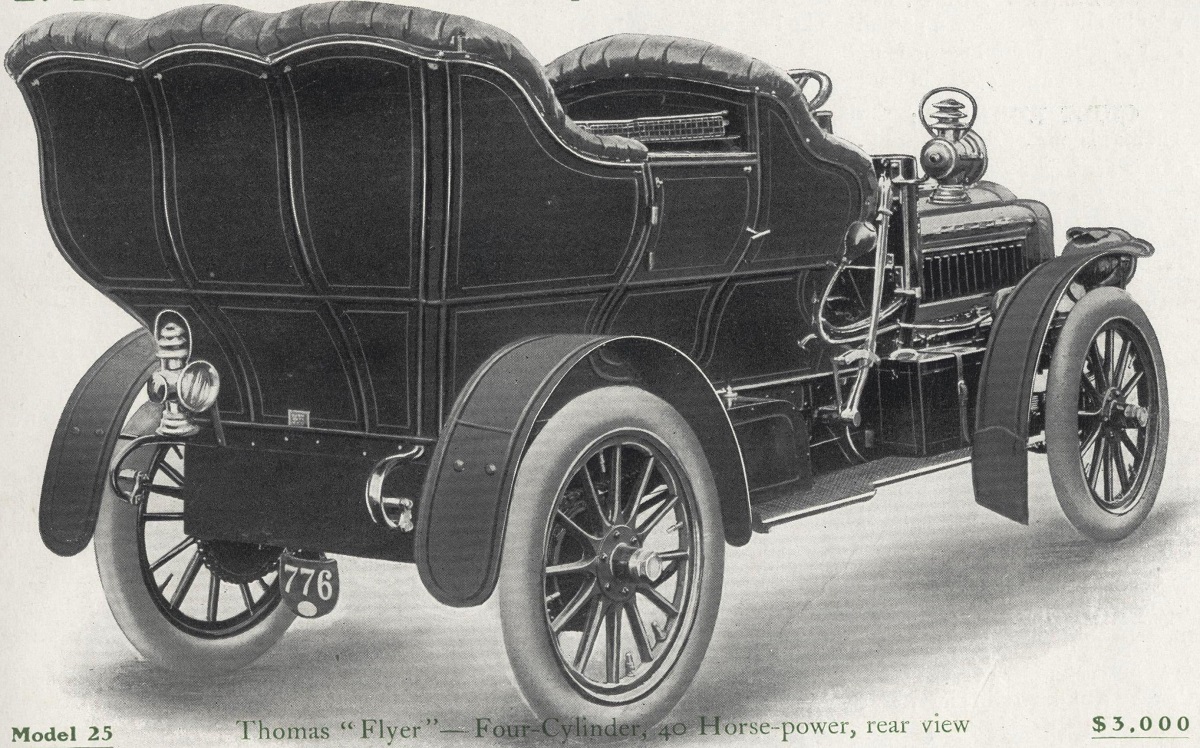
1905 catalog
The anngle of this view is identical to that of the second patent drawing, at top.
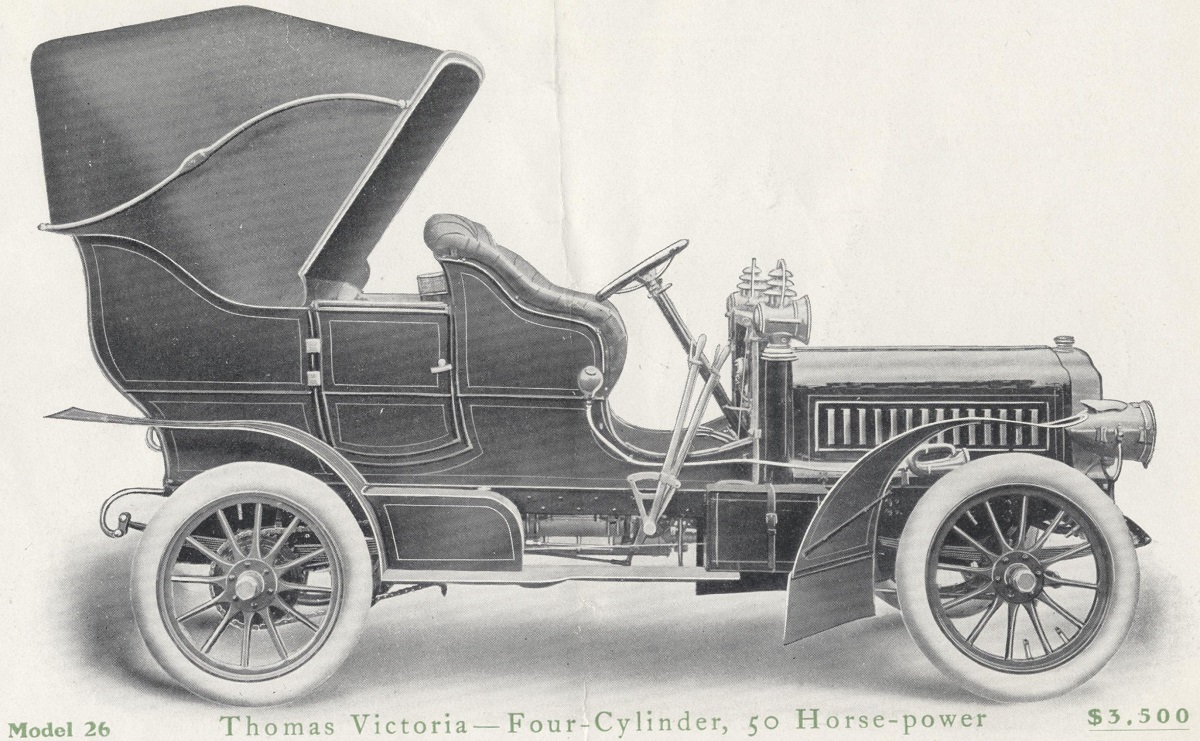
1905 catalog
Every reference to Model 26 either uses the word "Victoria," or shows the cape top.
But again, this image is derived from the car shown in the first picture.

1905 catalog
Even the Model 29 limousine image is derived from the car shown in the first picture.
Model 26
Next, two photographs of cars that are clearly this model.
Note that the door hinges have been repositioned for more stability. The door does not include a beltline trim piece.
Except for car #1, at the top, all period photos of 1905 cars show doors in this configuration.
Note also that top irons are only on the rear seat, one at the rear, and one where the seat side starts to curve upward.
Also, the radiator is deeper than the Model 25, with the crank stem passing through the radiator core.
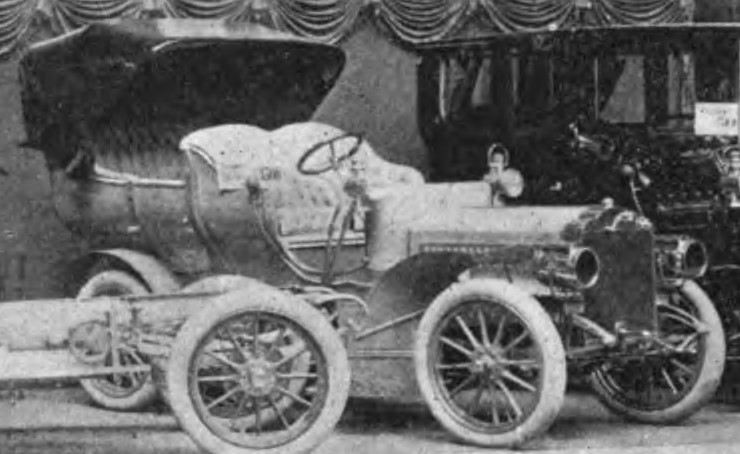
Motoring and Boating,
Jan. 19,
1905
on display at the New York Auto Show
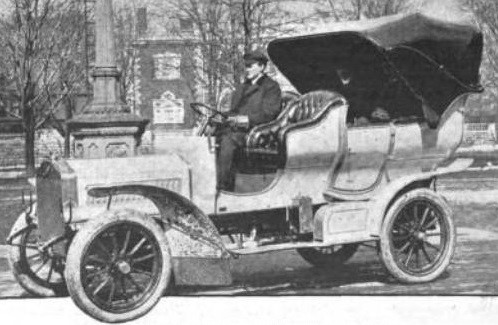
Automobile Review, May 15, 1905
Built for William Bliss of Boston, president of the Boston and Albany Railroad,
"finished in French gray with apple green trimmings and red running gear."
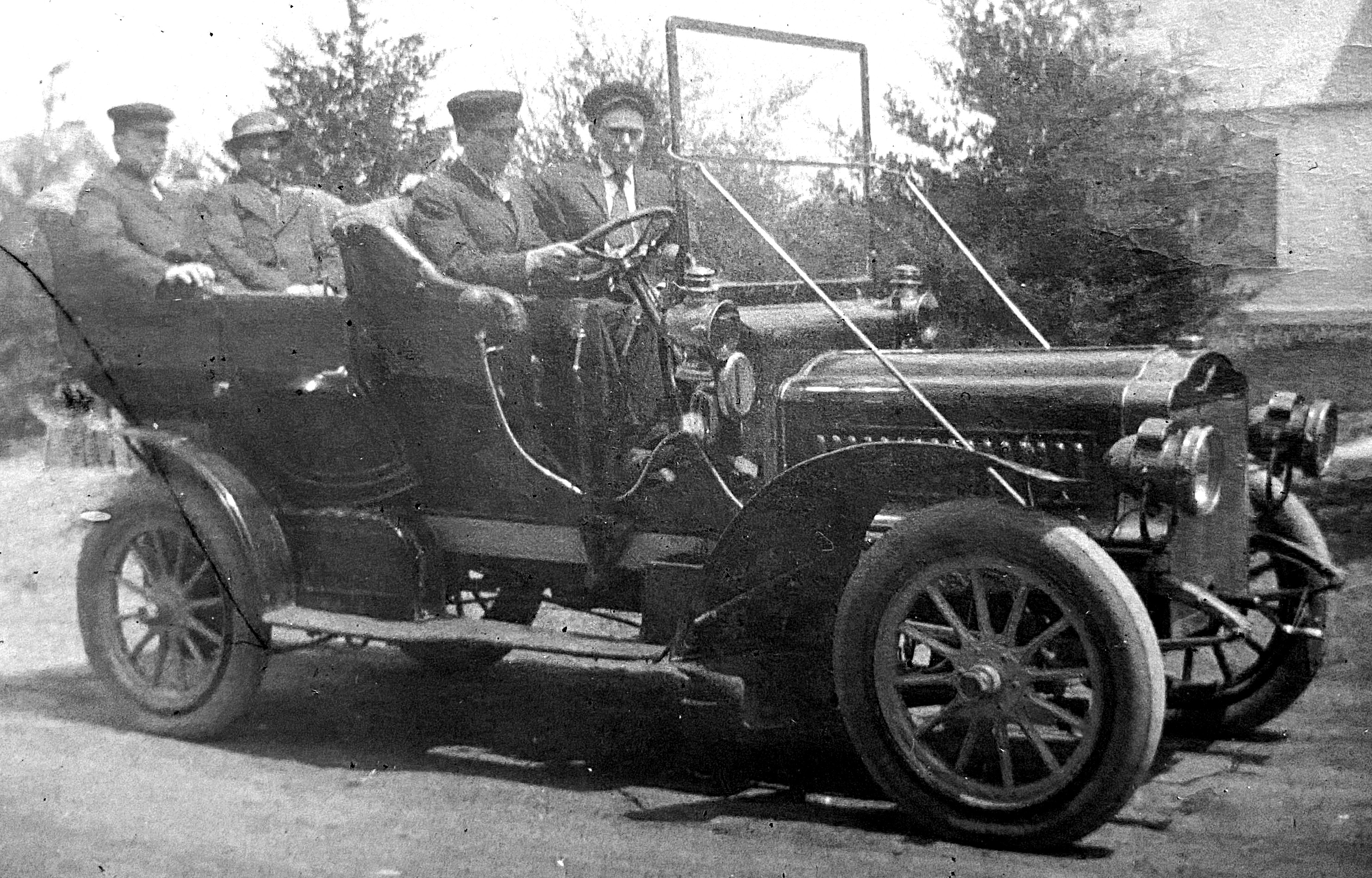
Evan Ide
Although this car show the front-seat irons of the extension top, its
long radiator and upswept rear fenders match the photos above.
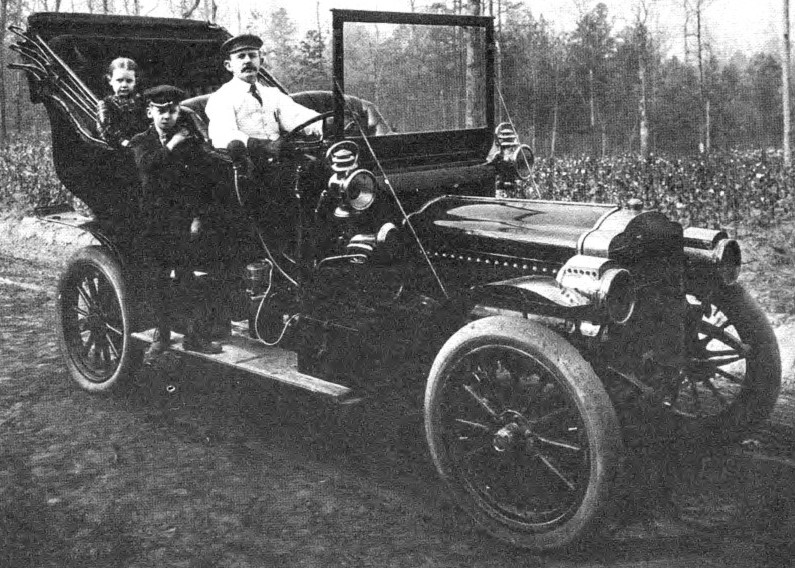
Horseless Carriage Gazette,
1980 v42
#3
taken in Alabama
Once again, extension top, but long radiator and upswept rear fenders.
This time the front fenders have a simple downward curve.
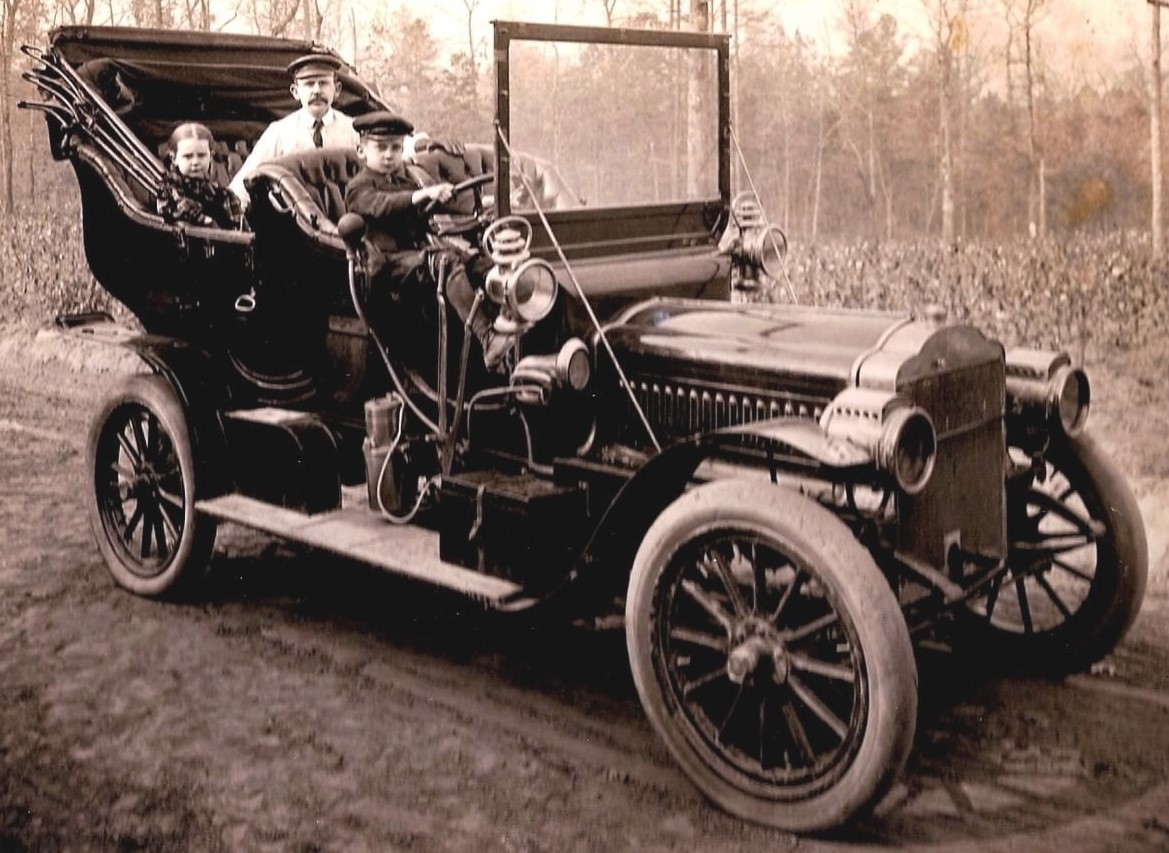
Cullman County Museum
After the real chauffeur took over again!

Mike Kaltenecker
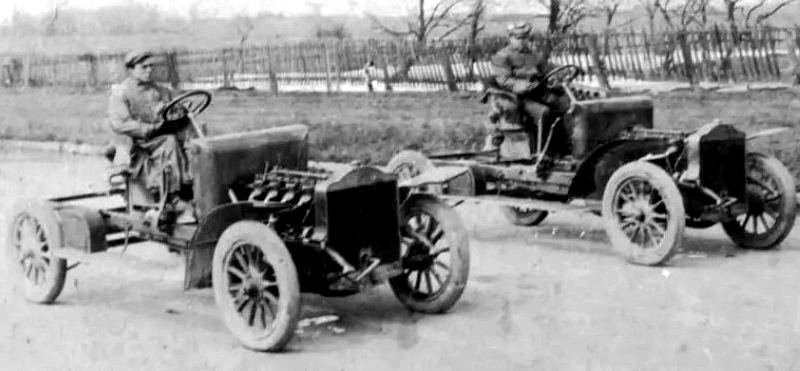
Jeff Chattin
labeled "1904 [...] Readville Track."
Boston rep C. S. Henshaw did race a 50hp Thomas at Readville in October, 1904 - he may be the driver of the near car.
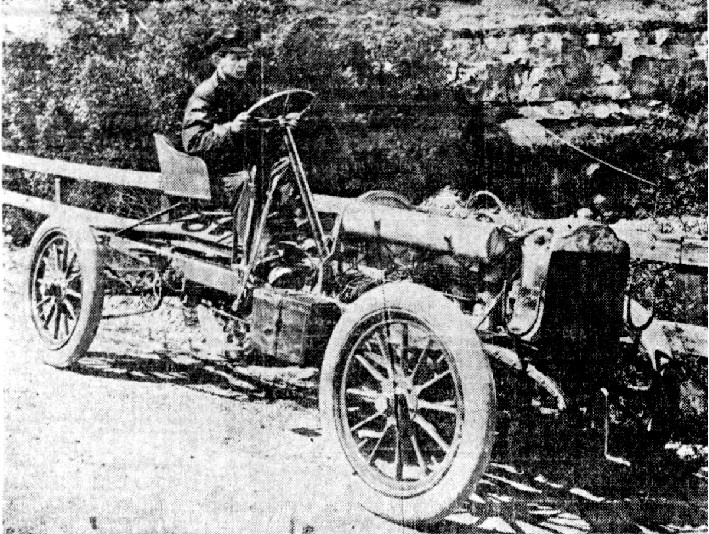
Minneapolis Star Tribune,
Jun. 27, 1905
The article accompanying this picture said it was a 50hp car.
Model 25 touring
This body was offered with the "extension top", so it has irons at the front and rear of the rear seat,
and in the middle of the front seat.
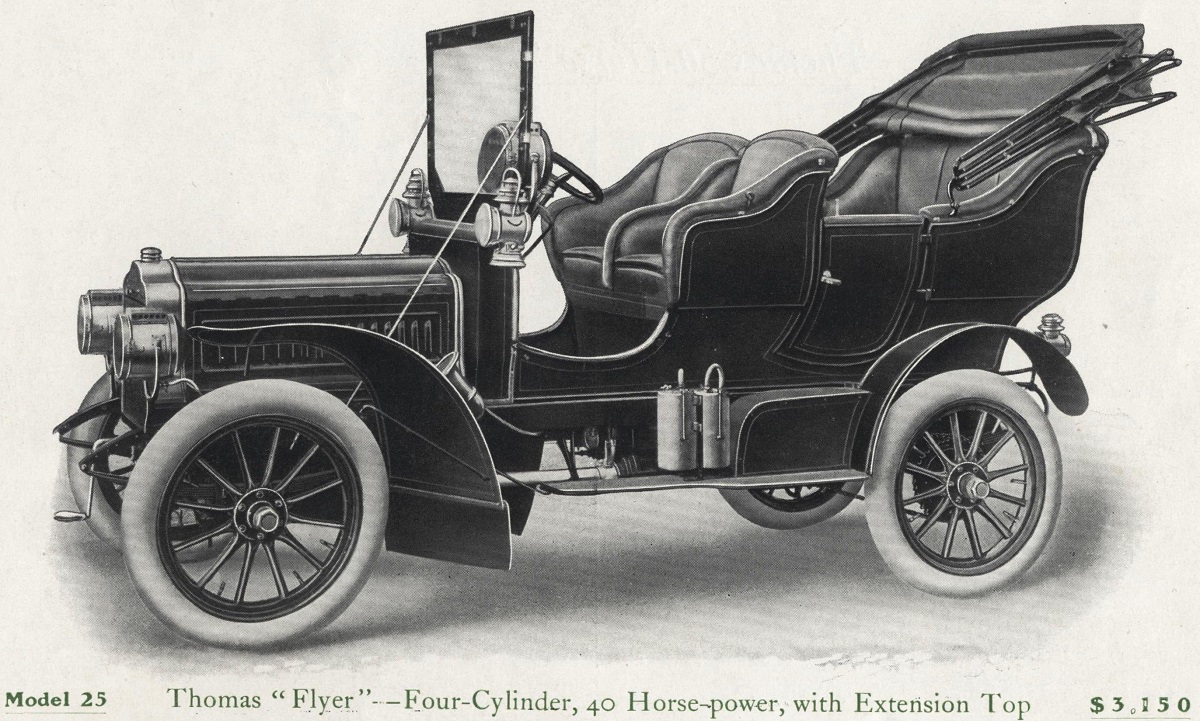
1905 catalog
The photograph source of this image was published in The Automobile for Jan. 14, 1905,
as an advertisement for the Sprague Umbrella Co., apparently the manufacturer of these tops.
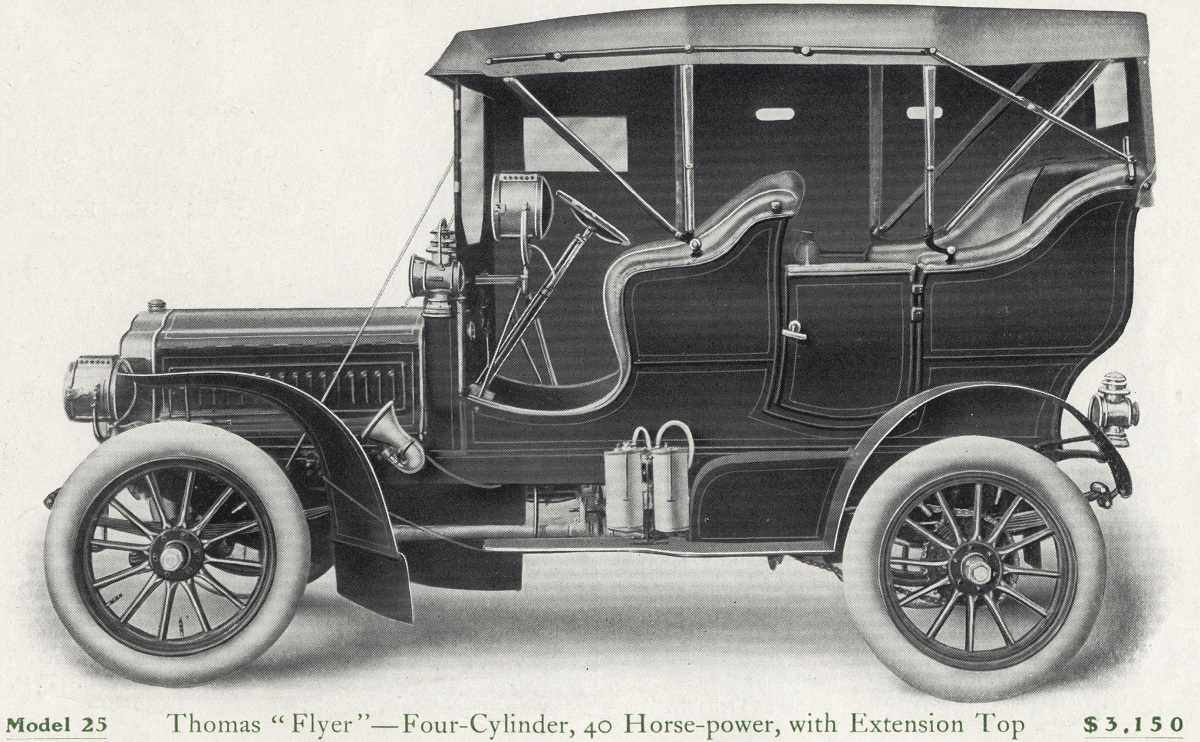
1905 catalog
The photograph source of this image was published in The Automobile for Jan. 14, 1905,
as an advertisement for the Sprague Umbrella Co., apparently the manufacturer of these tops.
The following 3 photos show Model 25, with the folding top or its body irons.
First, the car displayed at the New York Auto Show in January, along with the Model 26 above.
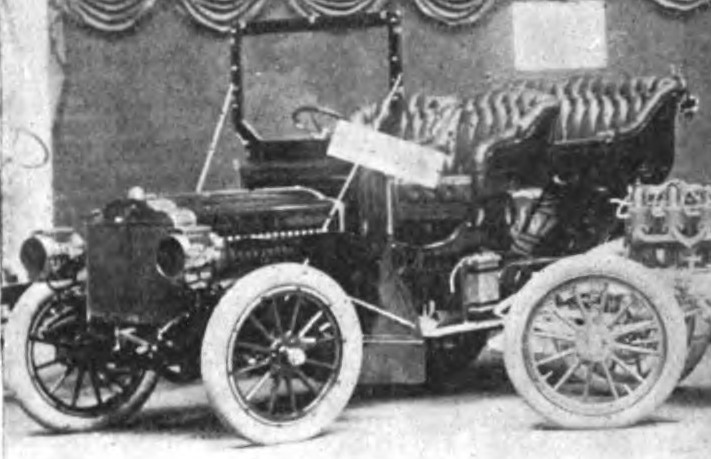
Motoring and Boating, Jan. 19, 1905
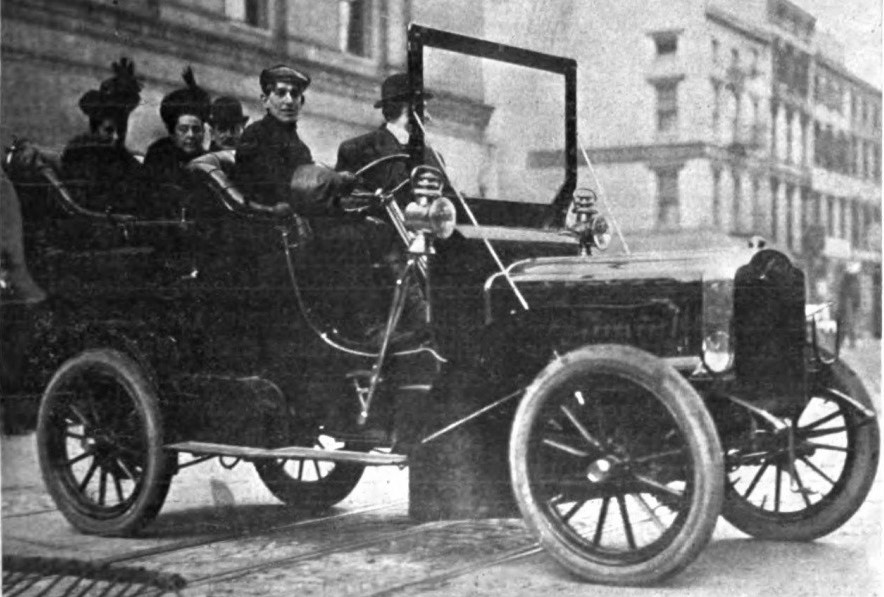
The Automobile, Jan. 21, 1905
This photo accompanied an article on the show. It may have been a car that was available outside for test drives.
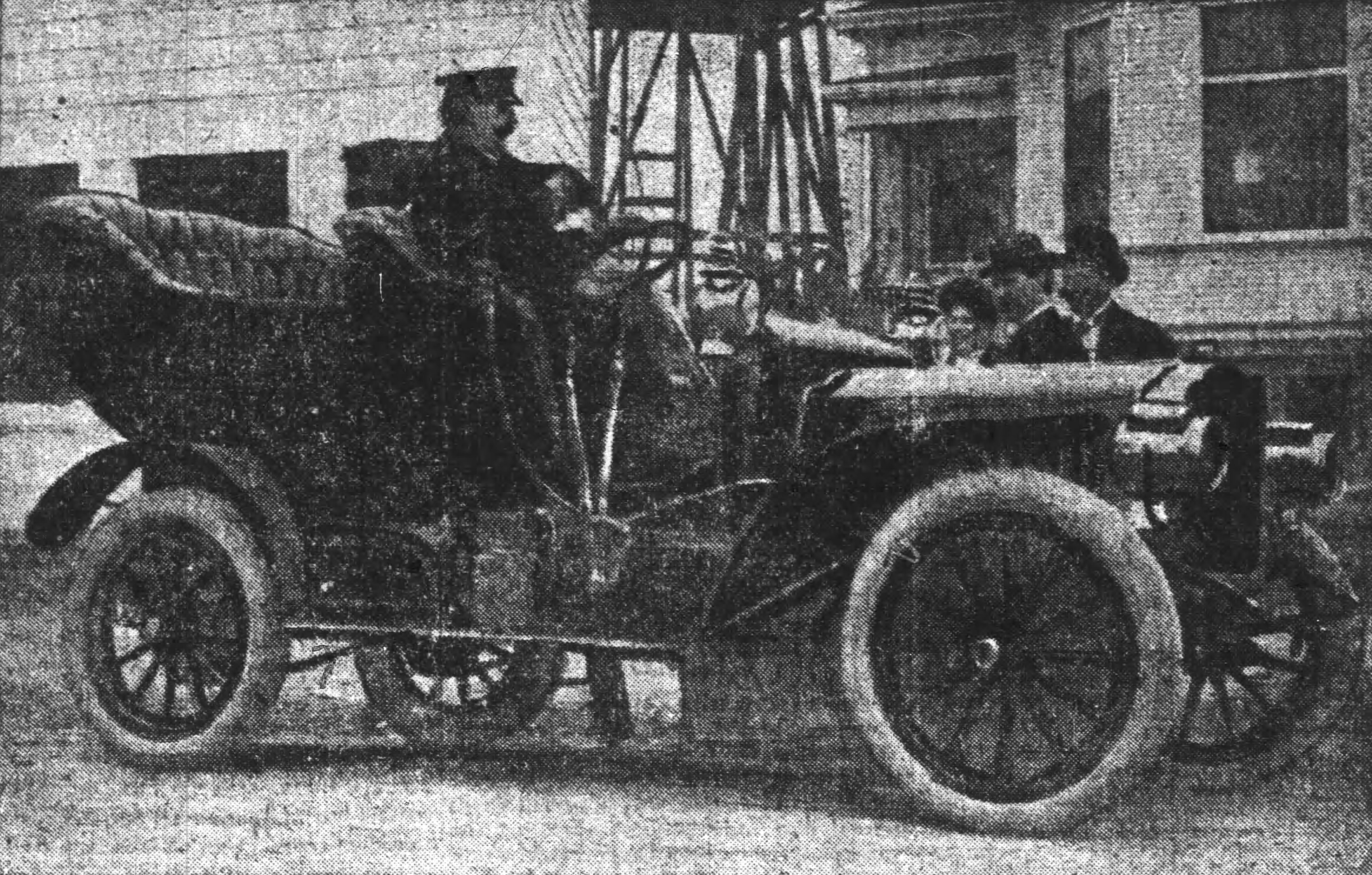
Oakland Tribune, Jul. 6, 1905
Oakland supervisor C. F. Horner, who bought a new Thomas every year from 1904-1908.
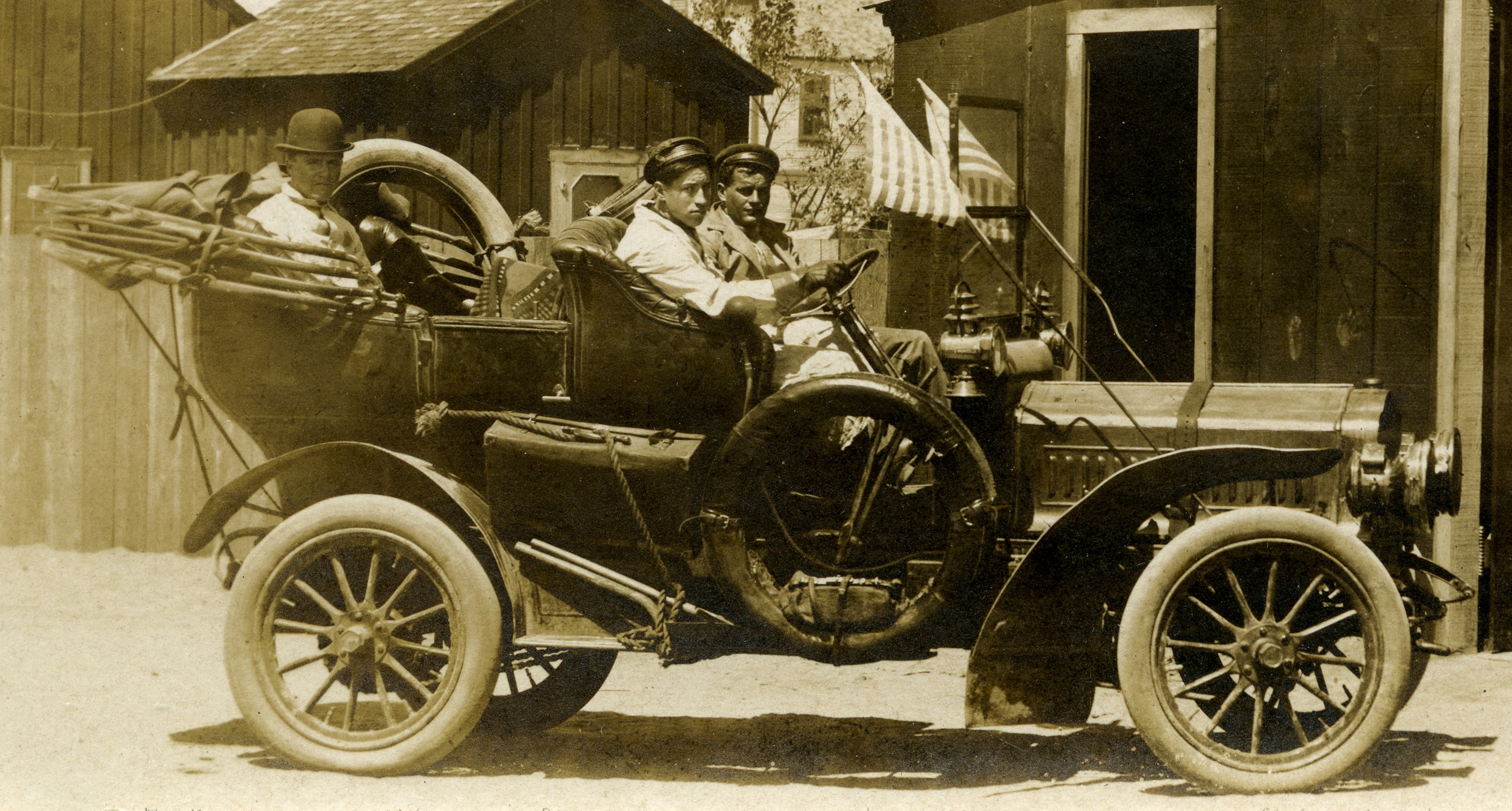
Mike
Kaltenecker
taken at the Delano garage in California
The next 4 photos show the forward and rear top irons on the rear seat, but do not show irons on the front seat.
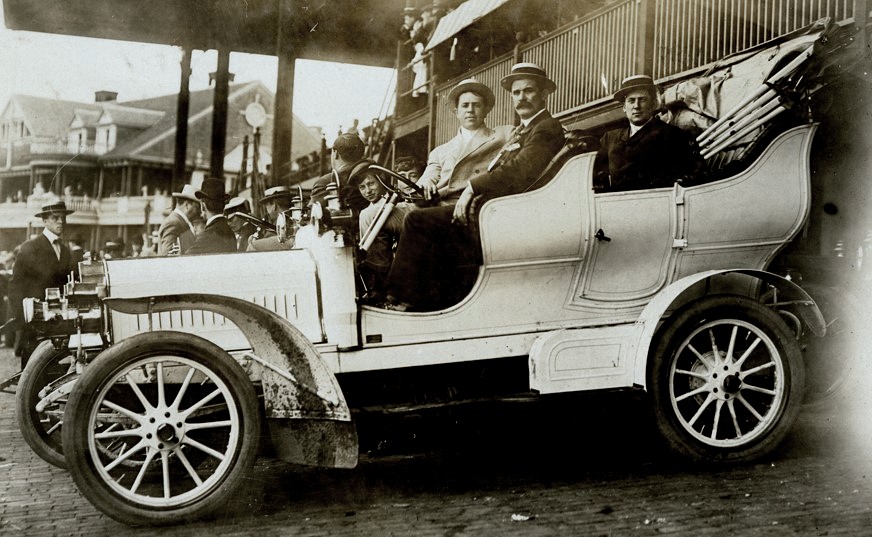
Detroit Public Library
Radiator height is not visible, but it has the hahlf-circle rear fenders typically seen on the short-radiator cars.
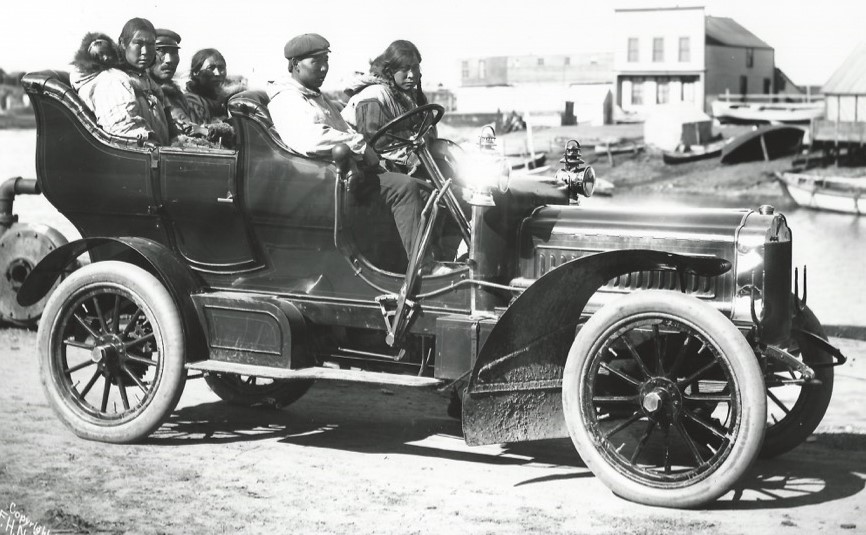
found
on
Facebook
taken in Alaska
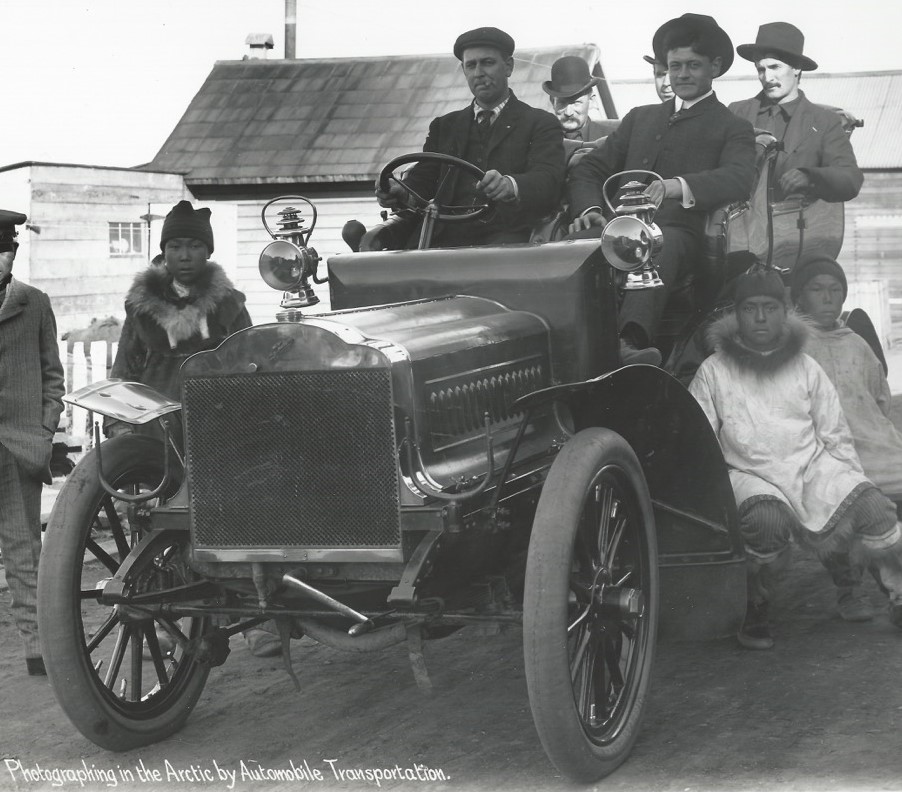
found
on
Facebook
taken in Alaska
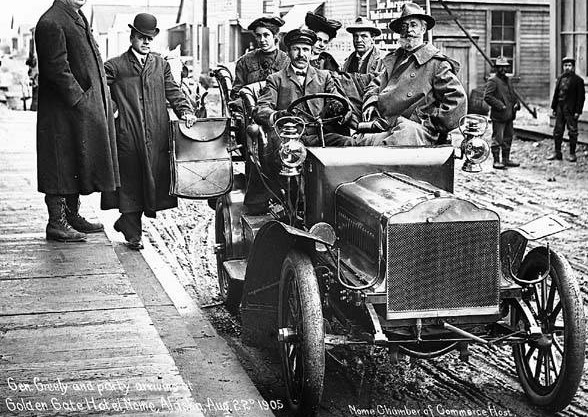
MSCUA,
University of Washington Libraries
Nome, Alaska, Aug 22, 1905
The following 4 photos, and possibly the 5th, are of the same short-radiator car.
The man in the back seat bears a strong resemblance to Thomas engineer A. B. Shultz.
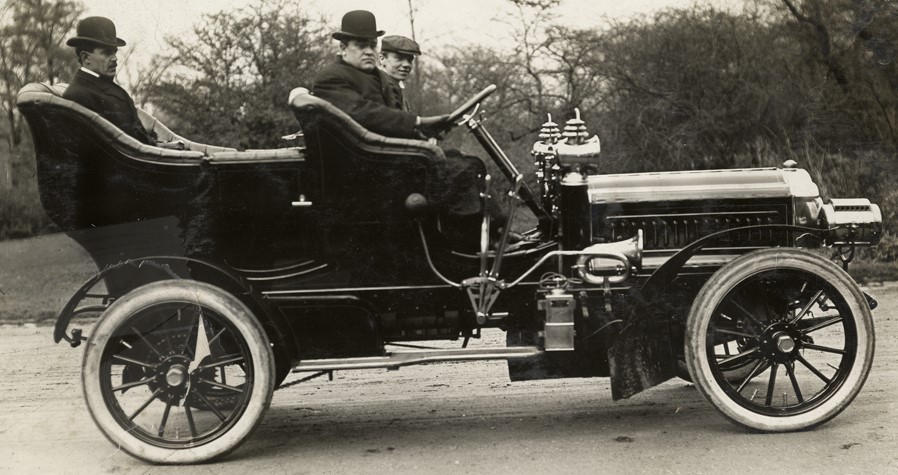
Detroit Public Library
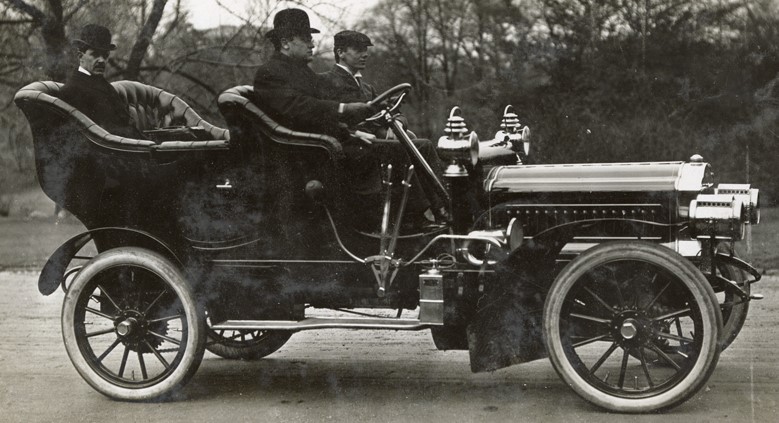
Detroit Public Library
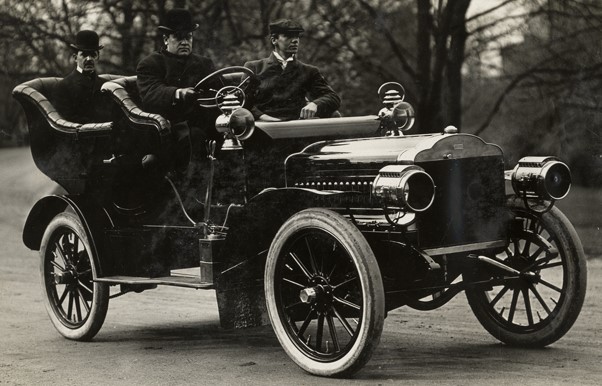
Detroit Public Library
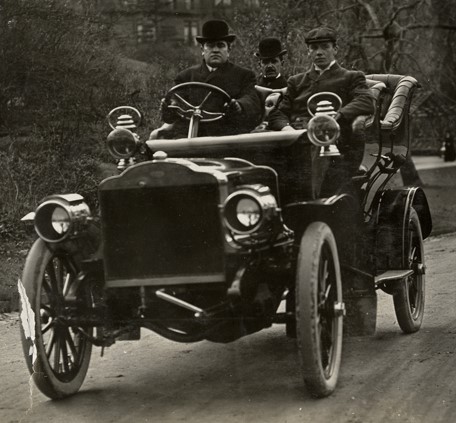
Detroit Public Library
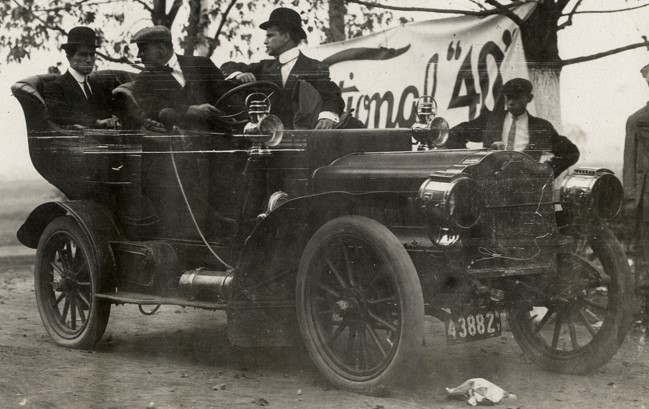
Detroit
Public
Library
1910 or '11 NY license plate
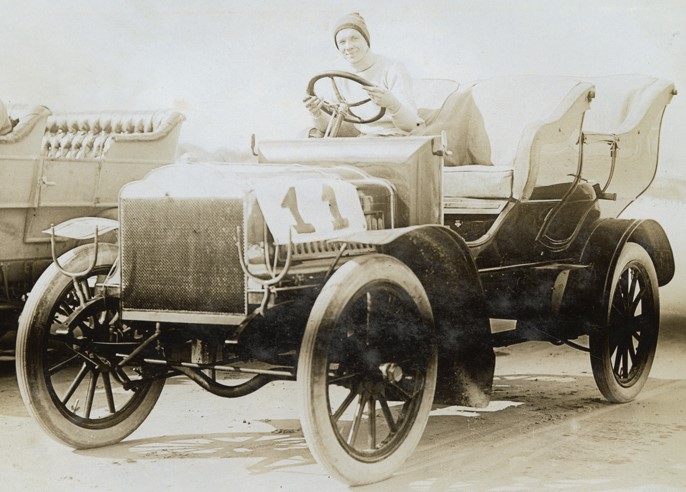
Detroit Public Library
This photo was probably taken at Ormond, on January 1905.
Harry Houpt brought a 40hp touring car, and had Montague Roberts drive.
The 31st was the date of the 10-mile handicap race that appears to be pictured in the next photo,
where the Thomas, far right, is numbered 11.
It would make this a very early production car.
Notice the 3 sockets along the side for a platform top similar to first photo, above.

Detroit Public Library
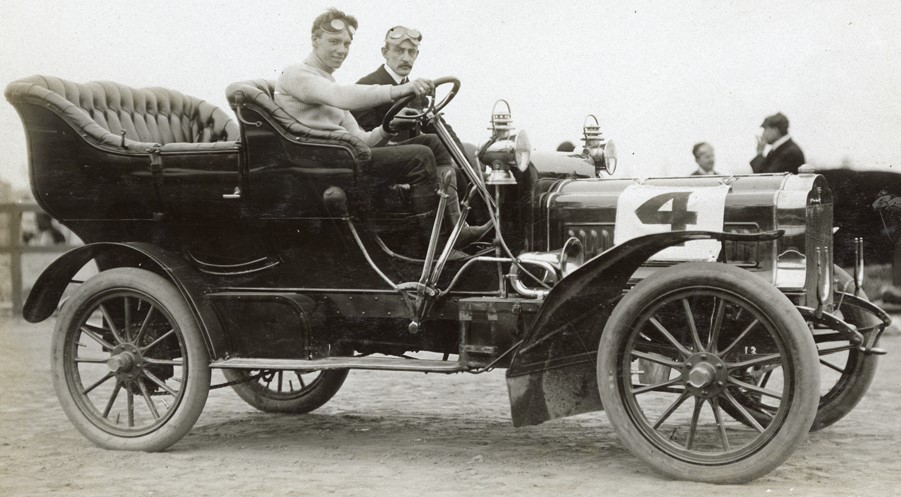
Detroit Public Library
This photo also appears to be taken at Ormond.
Roberts is again driving, in the same light-colored turtleneck,
and the passenger appears to be Thomas engineer A. B. Shultz, who did attend the 1905 Ormond meet.
Yet this is a different car from the previous photo.
It has irons for the folding extension top, and upswept front fenders.

Mike Kaltenecker
Short-radiator 40hp car, with the upswept rear fenders associated with the 50hp car.
Indefatigable Chicago representative C. A. Coey is said to be in the front seat.

Walla Walla Evening Statesman,
Jul. 3, 1907
Although heavily modified (note left-hand drive), this appears to be a Model 25 - note small radiator.
Virgil Hall raced it in the Pacific Northwest in 1906 and 1907.
It was described as being a 50hp car.

Automobile Review, Mar. 25, 1905
Model 29
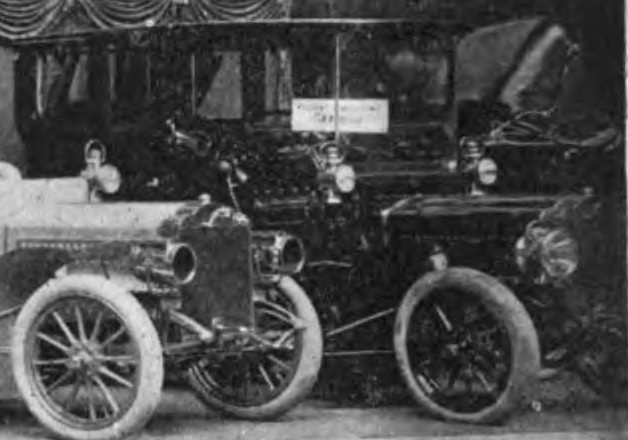
Motoring and Boating, Jan. 19, 1905
First, the New York Auto Show car.
An incomplete picture, but it's possible to make out the long radiator, matching the 50hp Model 26 beside it.
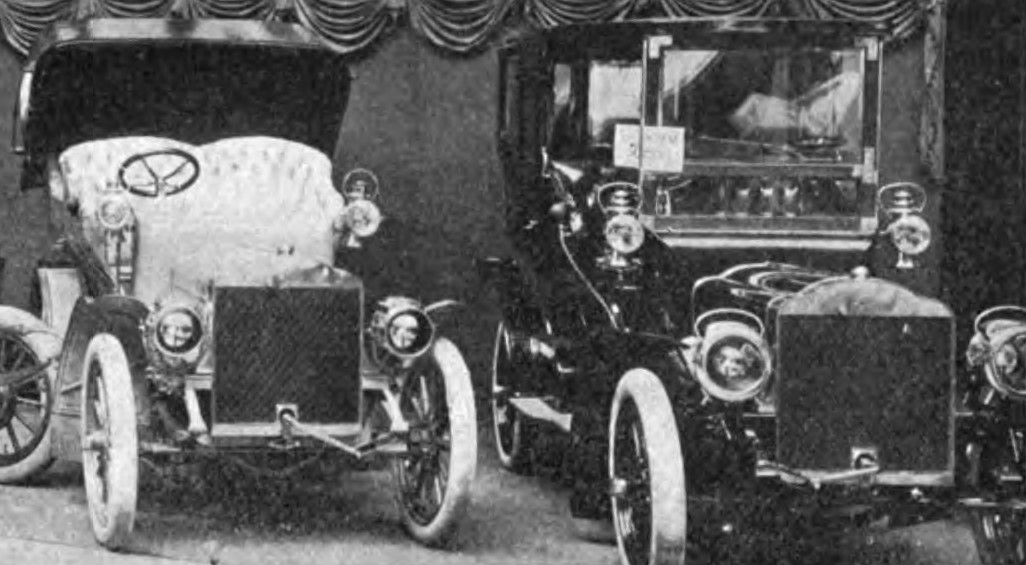
The Automobile, Jan. 21, 1905
Another view of that same pair.
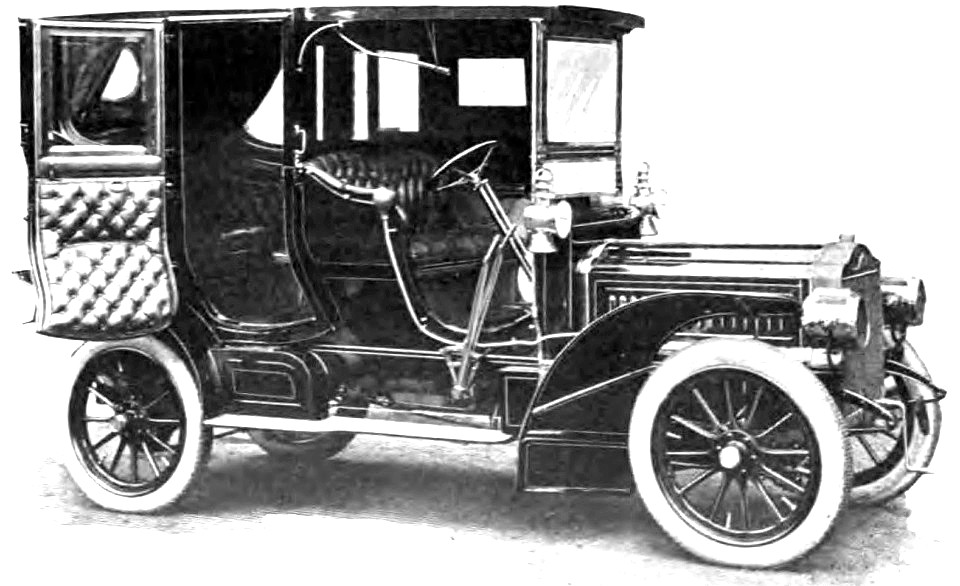
Motor Age,
Jun. 22,
1905
Specially built for George H. Hood of Boston
This body is a good match for the Model 29 catalog picture.
It was customized to have
the body replaceable with a tonneau and a folding or cape top.
It has the front seat iron for the folding top.
Original model unknown
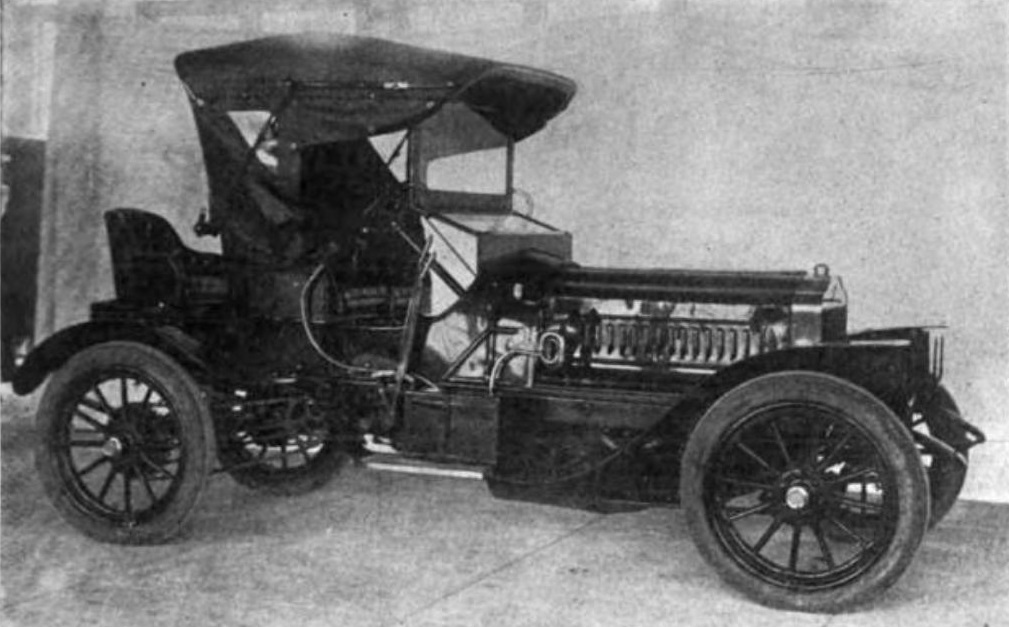
Automobile Topics, Jan. 4, 1908
In 1904, Theodore W. Foster, of Providence, RI, ordered this 1905 car.
Late in 1907, he sent it back to the factory for an upgrade.
He told them not to change the engine or transmission, because he was completely satisfied with the way the car worked.
They did the best they could to make it into a Speedway Flyer.
Engine compartment has been shifted back behind the front axle, a la Speedway Flyer.
Front fenders appear to be Speedway Flyer items, and possibly the cowl and body.
Conversion cost at the time was $1,200, well over $36,000 today.
Model 26 again
To finish up, here is a September image of E. R. Thomas's personal car - his monogram is on the door.

Horseless Age, Sep. 20,
1905
Note the improved hinge positioning, loss of beltline trim on the door,
the light color with highly contrasting trim, and the contrasting hood louver panel.
This car will return to us at the top of the 1906 page, where we'll see its long radiator.
And in fact this version appears to be a design exercise for 1906's Demi-Limousine model.












































